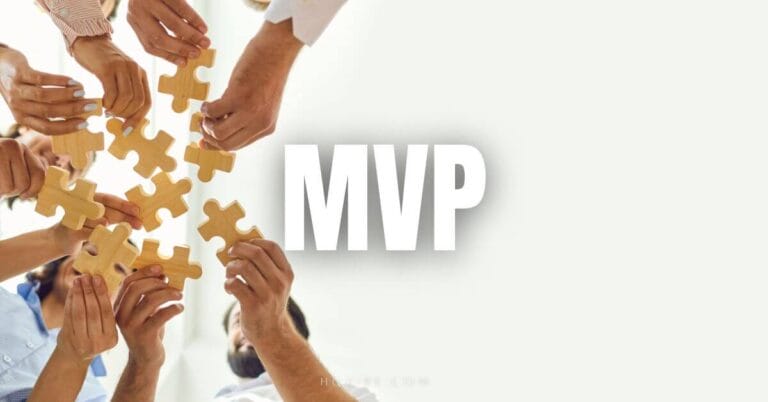Are you looking for a planning process that can help elevate your career, amplify your business, and drive personal growth? Implementing Hoshin Kanri planning process, a specialized goal setting methodology may help you set and reach your goals.
But what is Hoshin Kanri?
KEY TAKEAWAY
- Hoshin Kanri is a Japanese word that means “Policy Deployment” which is also sometimes called “Direction Management”, a strategic planning method.
- Hoshin Kanri Catchball offers open feedback loops across all levels of your organizational hierarchy by establishing a two-way communication between the upper management and throughout the company.
- Hoshin Kanri deployment process creates strategic initiatives that align the various objectives across the organization.
What is Hoshin Kanri?
Hoshin Kanri is a Japanese term that translates to “policy deployment” or “true North”. Hoshin planning is a strategy deployment method that ensures an organization’s strategic goals are communicated, understood, and implemented at every level of the organization.
The essence of Hoshin Kanri is to align the entire organization towards a common goal, promoting coordination, focus, and progress.
Like a well-orchestrated symphony, where every musician plays in harmony, creating a masterpiece.
What Does “Hoshin Kanri” Stand For?
With Hoshin Kanri: “Hoshin” means “policy” or “direction,” while “Kanri” signifies “management.”
Together, they encapsulate the art of managing direction or, more precisely, managing the alignment of strategic objectives with daily activities.
A management process that guides your organization towards your goals with precision and purpose.
How to Implement Hoshin Kanri Planning Process?
Now that you have a grasp of what Hoshin Kanri represents, let’s dive into its implementation. Hoshin Kanri is not a one-size-fits-all solution; rather, it’s a flexible approach that adapts to your specific needs. Here’s a simplified roadmap:
1. Establish Your Organizational Vision
- Mission, Vision, and Values: Begin by identifying your organization’s mission, vision, and core values. These elements form the foundation of your strategic planning.
- Vision Statement: Craft a clear and inspiring vision statement that aligns with your long-term goals. This statement should serve as a guiding light for your organization, outlining the desired future state.
2. Develop Strategic Objectives
- Breakthrough Objectives: Define your strategic objectives. These are breakthrough goals that will have transformational change, objectives that are required to realize for your organizational vision. They should be ambitious and address significant shifts in your operations.
- Focus on a Select Few: To maintain focus and clarity, it’s advisable to limit the number of strategic objectives to around three to four. Overloading your organization with objectives can dilute efforts.
3. Develop Annual Objectives
- Objective Breakdown: Take your strategic objectives and break them down into smaller, manageable annual goals. These goals should be specific, measurable, achievable, realistic, and time-bound (SMART) to ensure effectiveness.
- Key Metrics: Identify key metrics to measure progress, these metric needs to be measurable and qualifiable. They are the Key Performance Indicator (KPIs) for reaching your objectives.
4. Cascade Goals Throughout the Organization
- Distribution: Disseminate these objectives and annual goals throughout your organization. Each team or department should understand how their work contributes to achieving these larger objectives.
- Alignment: Emphasize the importance of alignment. Clarify how the efforts of individual teams support the overarching organizational goals. This alignment ensures that every level of your organization is pulling in the same direction.
5. Execute Annual Objectives
- Implementation Strategies: It’s now time to put your strategies into action. Break down the annual goals into smaller, actionable initiatives that teams can execute.
- Continuous Improvement: Embrace continuous improvement methodologies like Kaizen or the Plan-Do-Check-Act (PDCA) cycle. These approaches encourage ongoing refinement and progress tracking.
6. Implement Monthly Reviews
- Regular Progress Review: To maintain alignment between your goals and daily work, conduct monthly reviews. These reviews help identify any deviations or challenges early on.
- Project Management Tools: Consider using project management tools like Asana to streamline the review process. These tools can centralize goal tracking and facilitate communication among teams.
7. Conduct Annual Reviews
- Reflect and Evaluate: At the end of each year, perform a comprehensive review of your achievements. Evaluate whether you successfully met your annual objectives.
- Apply Lessons Learned: Identify lessons learned from the review process. These insights can guide your organization in making adjustments and improvements for the next cycle of Hoshin Kanri.
Benefits of Using Hoshin Kanri Methodology (Policy Deployment)
Hoshin Kanri isn’t just a buzzword; it’s a transformative approach that brings numerous advantages to the table:
- Strategic Alignment: It aligns everyone in the organization with the company’s strategic direction.
- Efficiency: By focusing on a few key goals, it avoids spreading resources thin.
- Continuous Improvement: It incorporates methodologies like PDCA, ensuring ongoing enhancements.
- Communication: It fosters clear communication of goals and progress at every level.
- Measurable Success: It utilizes Key Performance Indicators (KPIs) to measure progress and success.
- Competitive Advantage: It provides the strategic edge needed in today’s competitive landscape.
Hoshin Kanri revolves around using the Hoshin Kanri Catchball technique.
What is Hoshin Kanri Catchball Technique?
Hoshin Kanri Catchball technique is a management method where it offer open feedback loops across all levels of your organizational hierarchy by establishing a two-way communication between the upper management and throughout the company.
The idea is where the upper management of the company “toss” ideas for the list of objectives to the level of management below them. The management will then return the “ball” with their own input and ideas.
This process of “tossing the ball” is repeated until consensus is reached across all levels of the company.
How Steps of Hoshin Kanri Process Planning Different from Other Goal Setting?
Hoshin Kanri distinguishes itself from other goal-setting methodologies in several key ways:
- Top-Down Consensus: It involves top management in strategic planning while seeking input from middle management, promoting shared responsibility and buy-in.
- Focus on Effectiveness: It emphasizes doing the right things to achieve strategic goals, not just doing things right.
- Catchball Process: It encourages a back-and-forth exchange between management levels to ensure alignment and informed strategies.
- Visionary Planning: It creates a shared vision, providing purpose and motivation for employees.
- Closing the Loop: It establishes a closed-loop system for control and adjustment of the entire process.
| Aspect | Hoshin Kanri | Kaizen | OKR (Objectives and Key Results) | BSC (Balanced Scorecard) | QFD (Quality Function Deployment) |
|---|---|---|---|---|---|
| Focus | Long-term strategic goals | Continuous improvement | Shorter-term objectives and results | Comprehensive organizational view | Product features and quality |
| Alignment | Organization-wide alignment | Limited alignment at operational level | Limited alignment at operational level | Limited alignment at operational level | Limited alignment at operational level |
| Planning | Meticulous, structured planning | Ongoing, incremental improvements | Adaptive, frequent check-ins | Balanced perspectives | Product feature translation |
| Shared Vision | Emphasizes a shared vision | Individual improvement initiatives | Shared objectives and results | Shared organizational performance | Customer needs to product features |
| Strategic Emphasis | Breakthrough improvements | Incremental changes | Short-term objectives | Balanced perspectives | Quality and customer satisfaction |
| Culture | Fosters a culture of continuous improvement | Promotes a culture of continuous improvement | Encourages adaptability | Supports performance culture | Quality-driven culture |
Hoshin Kanri vs. Kaizen
- Hoshin Kanri: Focuses on long-term strategic goals, emphasizing organization-wide alignment and breakthrough improvements.
- Kaizen: Prioritizes continuous improvement through small, ongoing changes, mainly addressing short-term objectives.
Hoshin Kanri vs. OKR (Objectives and Key Results)
- Hoshin Kanri: Centered on long-term strategic objectives with top-down alignment, meticulous planning, and a shared vision.
- OKR: Concentrates on shorter-term objectives and key results, encouraging adaptability through frequent check-ins.
Hoshin Kanri vs. BSC (Balanced Scorecard)
- Hoshin Kanri: Provides comprehensive strategic alignment, emphasizing shared goals and structured execution.
- Balanced Scorecard (BSC): Offers a holistic view of organizational performance across various perspectives but may lack the same level of strategic alignment as Hoshin Kanri.
Hoshin Kanri vs. QFD (Quality Function Deployment)
- Hoshin Kanri: Focuses on organization-wide strategic goals, breakthrough improvements, and fostering a culture of continuous improvement.
- QFD: Primarily translates customer needs into product features, crucial for quality management but not as comprehensive in addressing overall organizational alignment.
Ready to Adopt The Hoshin Planning Process And Get a Breakthrough?
Hoshin Kanri is a problem-solving strategic compass that can help you steer your career, business, and personal growth towards success.
By using the Hoshin Kanri approach to strategy execution, this policy deployment methodology can help you align your organization’s strategic goals with daily activities, fostering efficiency, communication, and continuous improvement.
Combining strategy and execution, creating an alignment in the leadership team and across the organization on your goals and objectives, Hoshin Kanri will help you progress toward your organizations true goal and align to your overall vision for the organization.
Read Also:
- +21 Best Types of Goal Setting Techniques (Succeeding at Work)
- 22+ Goal Setting Statistics You Should Know in 2024 (Facts and Studies)
- Ultimate Guide to Hoshin Kanri (Policy Deployment) Strategic Planning (Step Guide)
- Management By Objectives (MBO) Goal Setting Model (Examples and Templates)
- OKR Framework: Ultimate Guide to Achieving Key Result & Goals (with Templates + Examples)
Join over 11,000+ achievers who are committed to achieving their career goals!







